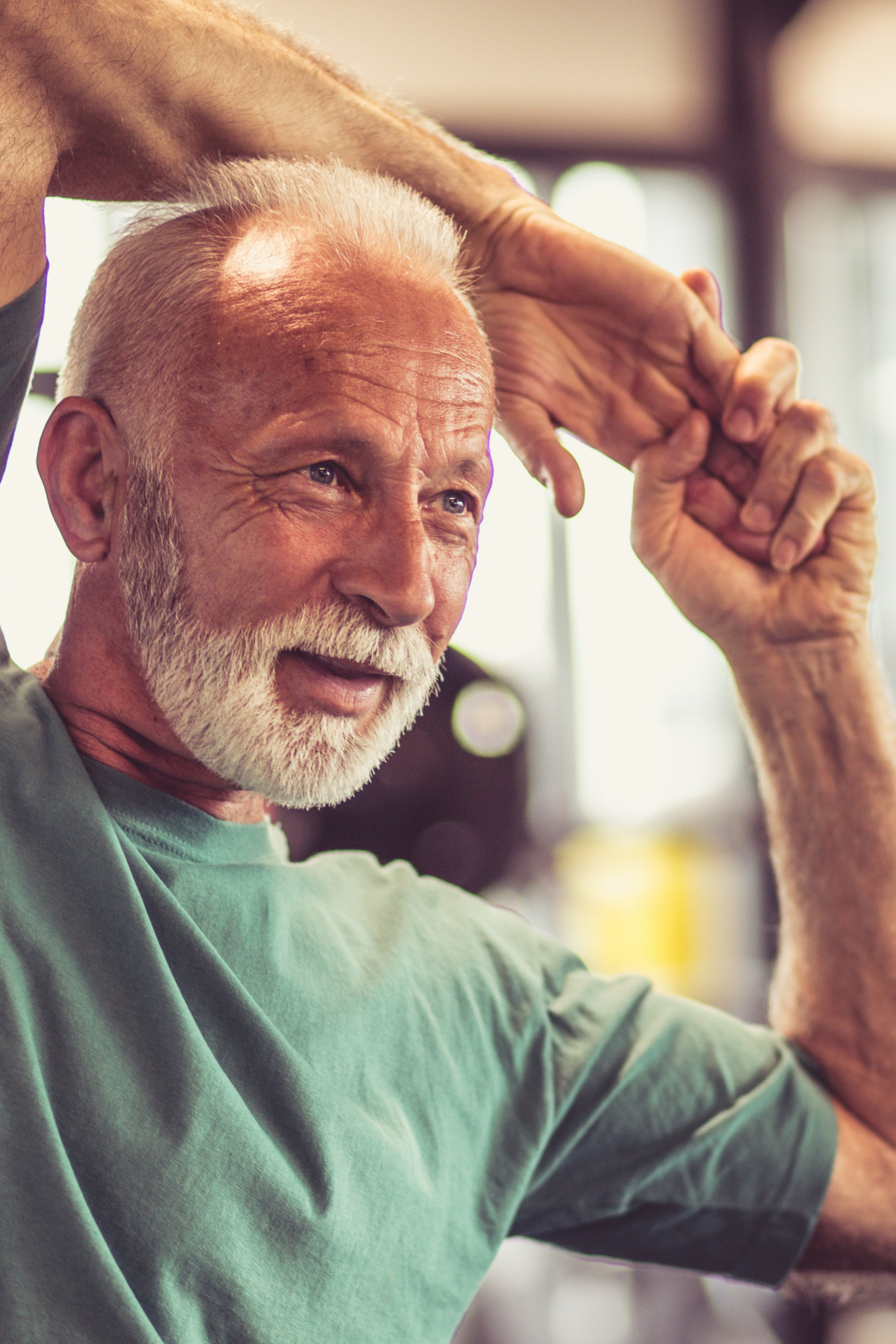
Be flexible
TRY 4 DAYS FOR FREE
Offer ends 31st January 2026

Flexibility is the range of movement available at a joint, and is probably the most important component of fitness. A lack of flexibility can severely affect almost every part of life – especially as you get OLDER.
Inside a joint there is an oil-type liquid called synovial fluid, which acts as a lubricant so that the bones don’t scrape across each other when the joint moves. Lack of this fluid will cause a joint to be stiff. But with most people this can be alleviated quickly by simply moving a little more and getting warm-up before a workout.
When you warm up two things happen: first, the repetitive movement causes heat, which causes the synovial fluid to become runnier (just like when you heat up cooking oil) and cause less resistance. Second, the body will release more synovial fluid to the joint, which lubricates the joint even more. This is one of the main reasons why you feel less stiff after a thorough warmup.
This is the type of stiffness that is caused by muscles, tendons, and ligaments. This is because muscles, tendons and ligaments span across joints (e.g. the hamstrings start below the knee, near the top of the calf muscle, meaning it has to cross the knee joint). Just like fluid resistance (above), heat will make muscles, tendons and ligaments more compliant (think of a stick of chewing gum before and after you chew it, same principle). You can also increase the compliance of muscles by stretching.
In general, the way to stretch is to hold a position that feels uncomfortable (until the point where you feel the muscle stretching to a point of slight discomfort) and hold it there for 8-10 seconds, at which point you should feel the discomfort ease off a bit. At this point, it is safe to stretch a little further until you get to the same level of discomfort as you did before. If you do this a couple of times at each of the major joints in the body, over time you will become more flexible.
Have you ever noticed that some people are just more flexible than others naturally? That’s probably because of a combination of two things: genes and childhood activity. There is no doubt that genetics plays a large role in natural flexibility, and research has shown that doing flexibility training (stretching) between the ages of 5-7 massively increases the chances that they will be flexible as an adult.
Warm up thoroughly before every training session and stretch afterwards. There is no need to stretch before a training session, that will not increase long-term flexibility. Stretching afterwards, if you commit enough time to it, will increase your flexibility despite your natural levels of flexibility.
At West Wood Clubs, we have a specialised class for stretching: BODYBALANCETM. Inspired by yoga, Pilates and tai chi, BODYBALANCETM will help you stretch, relax and instil a sense of calm in an otherwise hectic world, and has been scientifically proven to improve flexibility. Check out the timetable in your West Wood club today to see when your next class is on!
Unsure about which joints to stretch and how to do it? Why not ask one of our fitness trainers who are experts at this. Book yourself a free appointment and one of our trainers will show you the best stretches for your body and show you some of our specialist stretching equipment that you can use too.